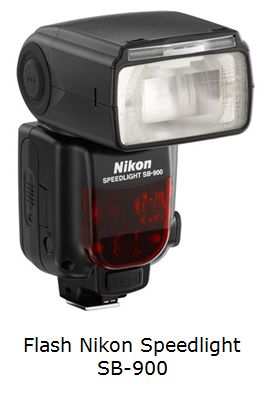What is the flash
The flash is an element used in photography that produces a flash of artificial light has a color temperature 5500K.
The flash can be used to illuminate a dark scene, to change the quality or quality of light, and to freeze moving objects.

The flash tube has a generally is filled with xenon light. They also have a capacitor which is a kind of battery or generator that stores electricity to fire the flash.
The energy will come from the batteries using the flash (external flash), batteries or batteries of the camera (flash) or outlet (studio flashes).
Electricity reaches the xenon tube and generates a flash of light.
The capacitor can store a lot of energy and supply it for a short time the flash tube. After discharge the capacitor needs recharging and this takes a certain time (load time).
According to DIN and ISO the flash may fire when they reach 70% of the load.
This can cause problems, since less light can shoot, having to ½ point difference in diaphragm.
But there flashes can be triggered only when the load is at 100%, such as Broncolor. Of course that makes the flash more constant and more expensive too.
Today most electronic flashes are allowing more control over the flash.
The flash has many advantages. Let's name the most important.
The flash produces (usually) a constant light
It consumes little power, especially when compared with tungsten or HMI lights.
Generate little heat.
You can take pictures with short exposure time is, high speeds.
Can be used without connecting to a power outlet.
The color temperature is 5500K, or daylight.
They have a great power.
The studio strobes have a modeling light (usually tungsten) that is attached to the flash lamp and serves to advance the lighting display. Should be light and can be dimmed to make it similar to the intensity of light flash.
Some disadvantages are:
The flashes are expensive. The better the flash has more power, more expensive.
The studio flashes are big and heavy and difficult to transport.
There are special batteries for flashes of study that once loaded, need not be connected to an electrical outlet to fire the flash. In fact batteries are great for studio strobes. But neither of these do not have to use a studio flash have to have an electrical outlet nearby.

